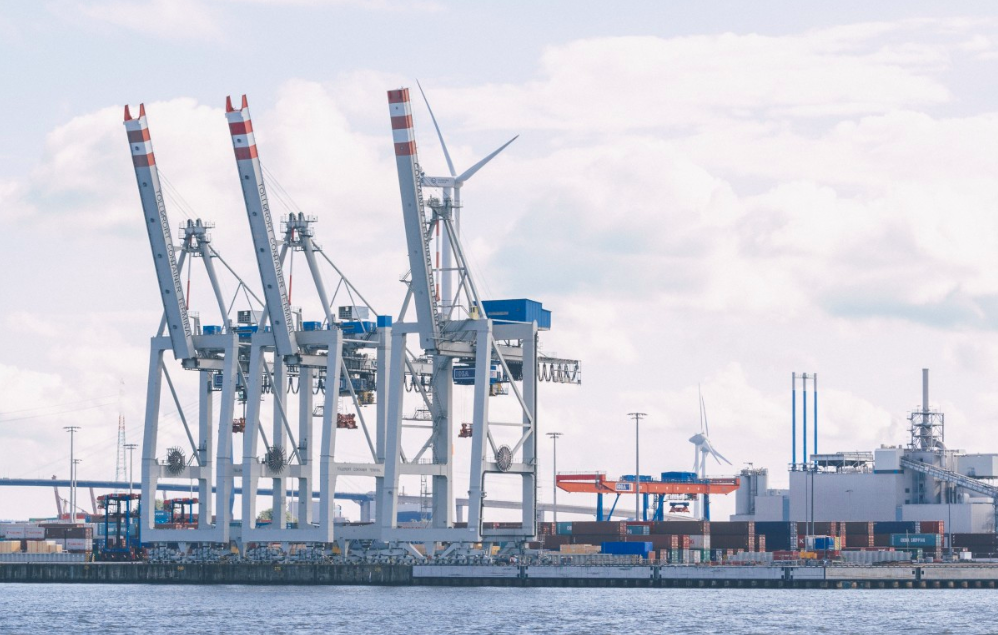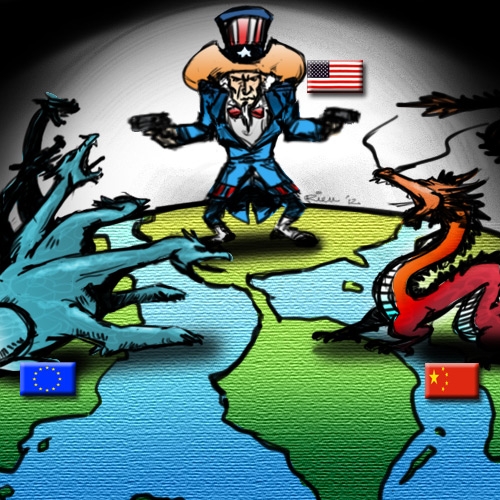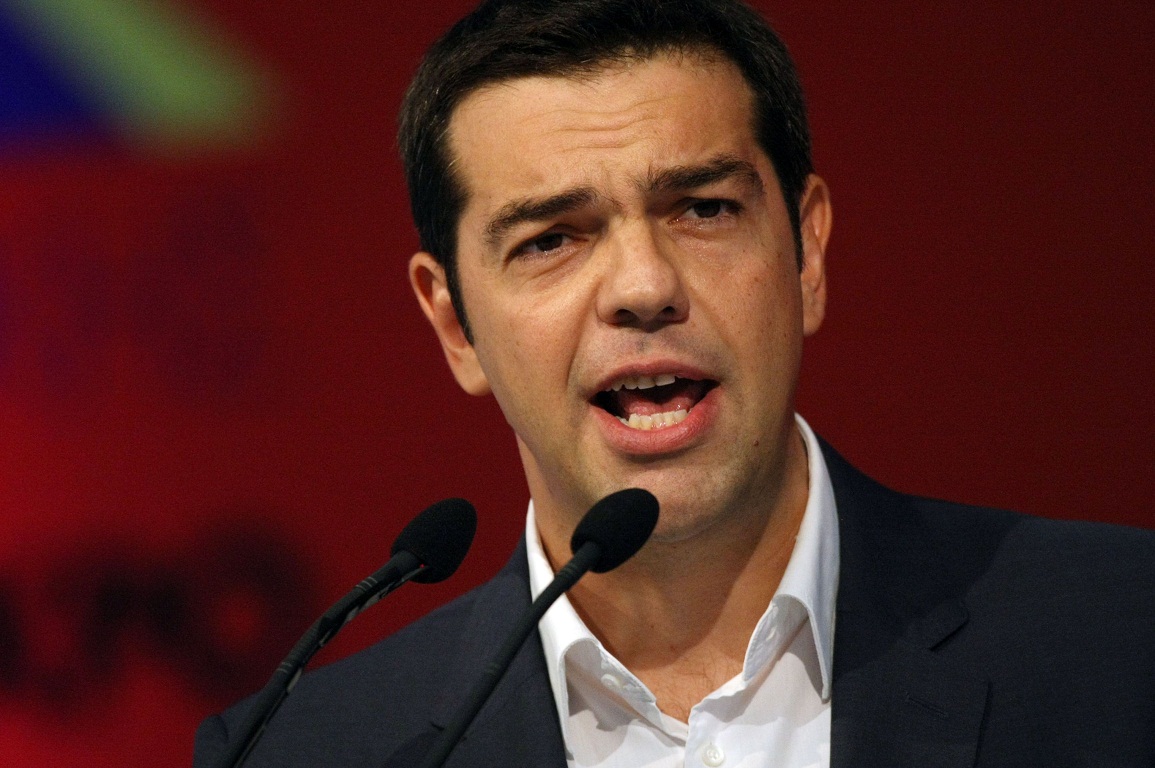China’s Belt and Road Initiative (BRI) has been a contentious topic in international affairs since it was announced by President Xi Jinping in 2013. The mega-project aiming to connect Central Asia, Europe, and Africa via economic trade routes has received mixed responses from the international community for its lofty goals. Despite criticism about the plan’s feasibility and intentions, China’s determination to proceed indicates that the BRI will remain the nation’s dominant foreign policy strategy. This article will analyze the Belt and Road Initiative’s influence on Chinese foreign policy through geo-economic and geo-political lenses.
The Basics of the Belt and Road Initiative
Introduced by Xi Jinping in 2013, BRI aims to link Eurasia and Africa through a series of road, rail, and maritime routes. The initiative aspires to promote trans-continental policy coordination and financial integration by fixing the continent’s ailing infrastructure. The Asian Development Bank (ADB) estimates Asia’s infrastructure crisis will require over $26 trillion USD to mitigate. Chinese investments in oil and natural gas pipeline construction, telecommunication and energy projects, and maritime trading ports are incentives for developing nations to participate.
As of 2019, there are over eighty nations under BRI’s mandate, with the additional support of the United Nations Development Programme. China’s ‘infrastructure gap’ from the continent acts as an appealing objective for developing nations to achieve. BRI has already made headway with construction projects in Pakistan (China-Pakistan Economic Corridor), Iran (Tehran-Rashaad High Speed Rail), Laos (China-Laos Railway), and Bangladesh (Sheila GanJie Power Station). Although BRI was formulated as a strategy to integrate underdeveloped Asian nations into the Chinese economy, the initiative has spread to attract developed economies in Europe, MENA (Middle East North Africa), and East Asia, who depend on China as a strategic trading partner.
Despite the estimated $8 trillion cost, China’s motivation to pursue BRI lies within anticipated long-term geopolitical and economic return. While BRI’s official mandate is to increase regional economic development and integration, it is clear that China stands to reap the benefits of being a ‘good neighbour’. Amidst strained Sino-American trade relations, the bilateral agreements between China and BRI members are a shift towards diversified diplomatic connections. The geostrategic implications of BRI indicate China’s investments will allow it to hold greater control over its trade relationships, secure its land borders, and expand its maritime influence across the Asia-Pacific. Ultimately, BRI is the spearhead of China’s foreign policy strategy for the twenty-first century.
Understanding China’s Perspective through History and Soft Power
To fully understand China’s commitment to BRI, it is critical to view the project through a foreign policy lens. China’s foreign policy is heavily influenced by the nation’s extensive history and the contemporary concept of soft power.

Once dubbed the ‘Yellow Peril’, China’s greatest challenge is overcoming the ideological and cultural divide from the West. Common misperceptions include fear of an aggressive Chinese hegemonic rise and confusion about China’s communist past. Contrary to Western ideals for individualism, China abides by Confucian values of group achievement and a harmonious world. After the ‘Century of Humiliation’ and foreign occupation, China respects and strives to maintain national sovereignty and peaceful power through a ‘good neighbor policy’. Furthermore, while Chinese nationalism flourished under Mao Zedong, the modern Communist Party of China (CPC) is dissimilar to its communist origins. In the decades following Mao’s death, Deng Xiaoping’s Open Door Policy and 24-Character Strategy prompted China’s reintegration to the international community by prioritizing economic development and friendly diplomatic relations. China’s current leader, Xi Jinping, reversed Deng’s low-profile approach towards foreign policy and holds more confidence about Chinese capabilities in global governance, albeit in a non-hegemonic and non-interventionist manner.
The rapid ascent of China as a superpower state since the 1990s is linked with the rise of globalization and the growing pertinence of soft power. Soft power, as defined by Joseph Nye, is the application of ‘attraction’ to persuade others under the guise of, and through economic prowess and the spread of cultural values. The emergence of soft power as a sphere of foreign policy is a reflection of globalization’s effect on the international system. Interdependence between nation-states negates the former effectiveness of direct military action. China’s push for soft power can be seen in the nation’s embracement of globalization and subsequent attempts to leverage material affluence with ideational influence.
Lastly, it is important to note foreign policy is a novel concept to the CPC. Foreign policy is ideologically divergent from the Western status quo. There is no specific organ for foreign affairs in Chinese bureaucracy as they view foreign policy as an extension of domestic policy. This can be attributed to the nation’s political tradition of ensuring the health of domestic high politics and survival of the CPC. The Chinese term for foreign policy is dui wai xuan chuan (external propaganda), explaining China’s conception of foreign policy as a reflection of Chinese achievement. Chinese foreign ministers consistently declare China’s ultimate goal is to redefine the public’s perception of Chinese intentions. Beijing’s ‘charm offensive’ is a general approach towards mending the perception of China from “threat to opportunity, danger to benefactor”. China’s main provision to extend its ‘charm’ is through economic investments under BRI and its related opportunities to focus on multilateral diplomacy in trade and development programmes in Africa and Latin America under the ‘Beijing Consensus’ and conceptualized ‘China Model’.
Maritime Silk Road: Geo-Economic Strategic Defence
In shedding Deng Xiaoping’s philosophy of a low-profile approach towards international politics, BRI is China’s declaration to secure its borders and extends its geopolitical reach. China’s maritime objectives concern the Pacific Rim, Indian Ocean, and South China Sea. The Maritime Silk Road (MSR) is an exertion of territorial power. Similar to its method towards political advancement, China’s defence strategies are accomplished through geo-economic means.
MSR is a response to Obama’s 2012 Pacific Pivot, India’s rising control of the Indian Ocean, and the Japanese nationalization of the contested Diaoyu/Senkaku islands. China’s establishment of maritime trading routes and sea ports is a strategic act to reclaim influence in Asian waters. Sri Lanka’s Hambantota Port, Malaysia’s Melaka Gateway Port, and the Malacca Strait are several examples of China taking purchase in the South China Sea to counterbalance dominant trading zones in areas such as Singapore and Hong Kong. The Malacca Strait is an especially calculated investment as it is the primary sea corridor for China and its Middle Eastern trading partners, and is therefore integral to Chinese energy security.
China executes a defensive realist approach towards American dominance in Asian-Pacific waters; the nation aims to contain American presence rather than assault it. China exercises peripheral defence, a strategy that allows the nation to extend its influence beyond traditional established land and maritime borders vis-à-vis its trade relationships with regional actors. Overall, the incorporation of MSR in China’s defense strategy indicates an acknowledgement of the nation’s technological and military asymmetry with the United States.
Polar Silk Road: Geo-Political Diversification
In January 2018, the CPC published a white paper on China’s Arctic Policy. The white paper made bold claims of China being a ‘near Arctic State’ and its intentions to create a ‘Polar Silk Road’. China’s interest in the Arctic can be attributed to climate change. Melting polar ice reveals the potential for alternative shipping routes and economic resources. The Arctic is acknowledged for having over a quarter of the world’s undiscovered hydrocarbon reserves and unextracted mineral deposits. While China seeks to benefit from shifting Arctic dynamics, it promises to do so in a sustainable manner. The 2017 Polar Code offers Chinese assistance in regulating sustainable development and its concerns over protecting the Arctic from climate change.
Although China has access to Arctic waters through the UN Convention on the Law of the Sea, the nation has no territorial foothold in the polar region. Traditionally, political matters concerning the Arctic remain confined to the discourse of the eight Arctic nations. China’s confidence in its ability to insert itself in Arctic affairs largely stems from its close relationship with Russia. So far, China’s Arctic Policy has met with little opposition from the international community. Chinese, Korean, and Japanese Senior Arctic Officials met in 2016 to discuss a trilateral East Asian approach towards the Arctic. The three nations agreed to a collaborative approach towards Arctic research and development.
China’s bilateral relationships with European Arctic nations further its confidence regarding the possibility of a Polar Silk Road. Iceland, Europe’s first country to establish free trade agreements with China, promotes itself as a logistical hub for Chinese trade. Finland and Norway actively cooperate with China to open EU-Chinese communications and have begun negotiations of a Finnish-Norwegian Arctic rail corridor under BRI. Sweden has offered infrastructural aid to incorporate its Lysekil port into the Polar Silk Road. The 2014 Ukraine conflict has strengthened Sino-Russian relations and allowed China to enter as Russia’s main trading partner after backlash from the West.
Ultimately, European Arctic nations view Chinese engagement in the Arctic as a ‘win-win’ for all nations involved. Chinese presence in the Arctic Council and mutually beneficial trade relationships strengthen the nation’s soft power in the polar region; the Polar Silk Road effectively capitalizes on geopolitical opportunities without challenging the authority of Arctic states.
International Response and Critiques
BRI faces controversy for the policy’s vague long-term plan and China’s leverage over BRI nations. Some Western governments accuse China of creating debt traps and exploiting developing nations. China admits the initiative is a solution to domestic trade surplus and overcapacity of human capital. However, China’s ‘dumping’ of its excess resources create an asymmetric environment in BRI nations. Over 89% of BRI projects are assigned to Chinese companies, and contracts require mandatory usage of Chinese equipment, labour, and materials. Consequences of excluding regional integration can be seen in the case of Sri Lanka’s Hambantota Sea Port. The port was not commercially viable, and Sri Lanka could not repay its outstanding debt; as such, the port was handed over to Chinese investors. Other nations who have withdrawn or scaled back projects due to fiscal concerns include Malaysia, Myanmar, Pakistan, Nepal, and Sierra Leone.
As well, the formation of the Asian Infrastructure Investment Bank (AIIB) as a complementary institution to BRI have drawn comparisons between BRI and the Marshall Plan. Despite attempts to antagonize AIIB as a rival to the Asian Development Bank (ADB), the two bodies focus on separate areas of development and co-finance Asia’s projects together. Likewise, the relationship between the World Bank and AIIB is one of mutual support.
Implications
Despite international critique, there is flexibility and potential sources of benefit for BRI members. BRI nations can gain influence through fostering an environment for Chinese interdependence. Track II diplomatic negotiations, policy coordination, and cultural exchange decrease the likelihood of hostility. While it is improbable for nations to align or even understand all Chinese ideologies, it is in the members’ best interest to acknowledge differences and focus on shared interests instead; friendly diplomatic relationships are the most effective method for BRI members to maximize their influence in the region.
Ultimately, China needs to actively assure the international community that its intentions are benign and familiarize the world to the benefits of having a ‘good neighbour’. China’s strategy needs to evolve with the direction of globalization and the ramifications of a modern international system. While there is a potential for developing nations to achieve exponential growth, there is nevertheless an underlying reality that unequal development can foster sentiments of contempt and imbalance. As such, to fulfill its foreign policy goals, China’s actions with BRI ultimately need to be more specific, transparent, and demonstrate they can benefit parties beyond China’s borders.
Featured Image: “transport, vehicle, mast…” via Pxhere. Licensed under public domain.
Disclaimer: Any views or opinions expressed in articles are solely those of the authors
and do not necessarily represent the views of the NATO Association of Canada.




